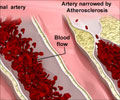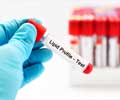Perivascular adipose tissue (PVAT) found around arteries may play an essential role in keeping those blood vessels healthy by assisting arterial stress relaxation, reports a new study.

‘The fat, known as perivascular adipose tissue, or PVAT, helps arteries do "stress relax," or let go of muscular tension while under constant strain.’





"In our study, PVAT reduced the tension that blood vessels experience when stretched," said Stephanie Watts, MSU professor of pharmacology and toxicology in the College of Osteopathic Medicine. "And that's a good thing because the vessel then expends less energy. It's not under as much stress."What made the finding so exciting, Watts said, whose study was recently published in the journal Scientific Reports, is that PVAT has largely been ignored by researchers who have thought its main job was to store lipids and do little more. Now her findings, built on previous results, could help redefine the way scientists view blood vessels.
Right now, scientists only divide blood vessels into three parts; the innermost layer called the tunica intima, the middle layer called the tunica media and the outermost layer called the tunica adventitia.
Watts would like scientists to recognize PVAT as the fourth layer, which others have called tunica adiposa - tunica means a membranous sheath enveloping or lining an organ and adiposa is a synonym for fat.
"For years, we ignored this layer - in the lab, it was thrown out; in the clinic, it wasn't imaged. But now we're discovering it may be integral to our blood vessels," Watts said. "Our finding redefines what the functional blood vessels are and is part of what can be dysfunctional in diseases that afflict us, including hypertension. We need to pay attention to this layer of a blood vessel because it does far more than we originally thought."
Advertisement
But Watts and her colleagues wanted to test whether PVAT itself, rather than the substances it secretes, might play a role in how blood vessels perform. So, they decided to test whether PVAT provides a structural benefit to arteries by assisting the function of stress relaxation.
Advertisement
"My mind was blown," Watts said when she saw that the pieces with surrounding fat had measurably relaxed more than those without. "I made every single person in my lab come and look, and I asked, 'Tell me if I'm hallucinating...do you think this is real?'"
Watts and her colleagues also tested other arteries and were able to duplicate the same response.
"So, this tells us, it's not just a one-off," Watts said. "It's not something you see only in this particular vessel or this particular species or this particular strain. But that maybe it's a general phenomenon."
Source-Eurekalert















